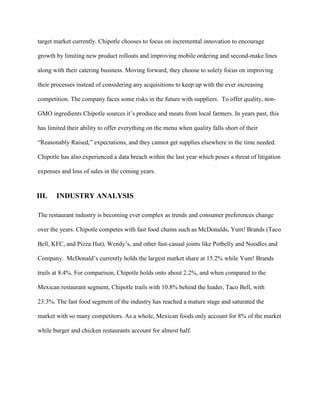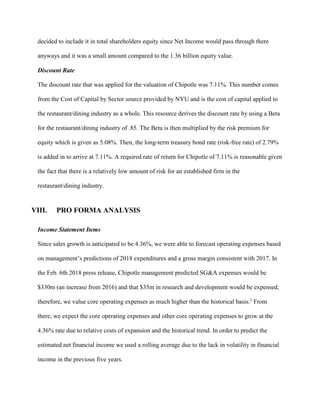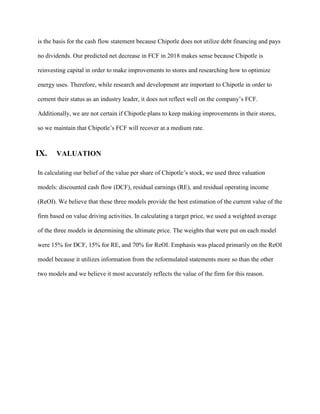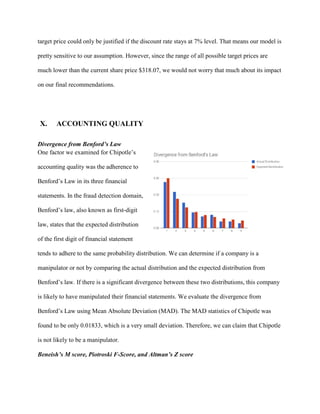This document provides an analysis of the financial statements and valuation of Chipotle Mexican Grill. Key points include:
- We recommend a Sell position based on three valuation models, with a price target of $175.11, significantly below the current share price of $318.07.
- Sales growth is forecasted at 4.36% annually for the next three years based on an estimated 140 new store openings in 2018 and new stores generating 75% of existing store sales on average.
- Profit margins have declined in recent years due to increased expenses from promotional programs, lawsuits, and planned store renovations. Margins are expected to continue struggling going forward.
- Competitively, Chip



























